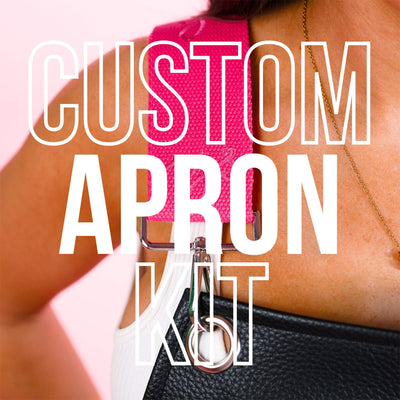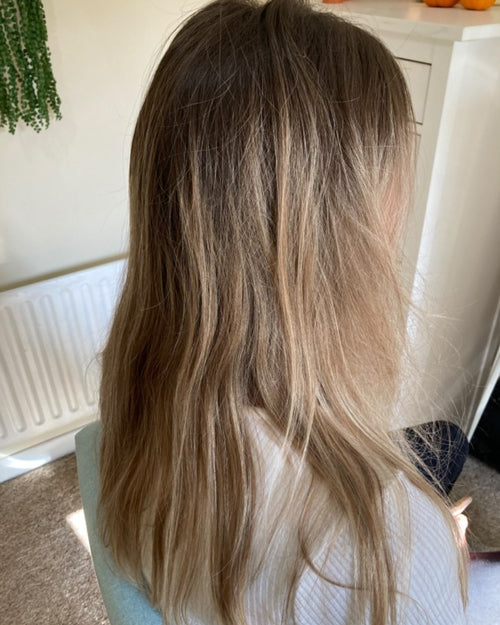What are the different techniques for balayage?
Balayage, a technique said to have originated in 1970’s Paris, is now one of the most highly requested colouring techniques and has become a staple hair trend. Balayage is a technique used to apply colour with no harsh demarcation lines and generally no high contrasting colours (except for ombre balayage). The beauty of balayage is that there are so many different techniques used to create a unique finish on every client, and your choice of balayage technique can complement the overall look your client is hoping to achieve.
So What Are The Key Balayage Techniques?
There are so many varieties of balayage techniques that have been developed over the years, demonstrating just how versatile this colour method can be. We shall list a few in this article.
What Is Freehand Balayage?
The freehand balayage method is pretty much what it says on the tin. The colourist will paint the colour onto the hair using a tint brush and balayage board. It allows the stylist to have creative freedom when the colour is applied, giving a genuinely customised finish. To avoid hard demarcation between the balayage and natural colour, stylists will use a backcombing technique at the roots to ensure a natural finish is achieved, and this backcombing technique is used throughout most balayage methods.
What Is Facelift/Face-framing Balayage
The main aim of this technique is to use colour and highlights to frame the face, accentuating the eyes and the cheekbones. This method is usually only applied to the front of the hair, so it has maximum impact, even with only a small coverage. It is high impact but low commitment, as the balayage technique grows out very naturally due to the soft blending, so it is suitable for those who do not want a high maintenance colour but are looking for a refresh. The face-framing balayage technique is a speedy way to add some youth back into a haircut. When tinting stronger hair sections around the expression areas, such as the eyes, cheekbones and jawline, many consider the technique to be the equivalent of a facelift in haircut form.
Ombre Balayage
Ombre as a stand-alone colouring method has been slowly replaced by the more subtle balayage method; however, many still opt for an ombre balayage which combines the two techniques for a much more wearable ombre option. The signature of an ombre style is for a distinct colour change around halfway through the hair; however ombre has received a bad wrap over the years for some hefty demarcation lines, and the difficulty growing the style out. By combining a balayage technique with an ombre mindset, you can create this distinct colour change, but much more subtly. The colour change is a lot smoother thanks to the backcombing method to remove demarcation lines, and will therefore be much more wearable as it grows out.
Sombre Balayage
Similar to the ombre balayage, but a lot more subtle variation. Using the same technique as above, but with less contrasting colours. Using a handpainted balayage technique, with colour only a shade or two lighter than your clients base colour, you can create a stunning sombre balayage that is very wearable and natural.
Babylights Balayage
Using a balayage technique on very small pieces of hair around the hairline, this technique is used for a natural, sunkissed look. It's a very subtle way to add some dimension to your colour, with a stunning natural finish.
This technique is usually achieved using lots and lots of hair foils, and usually involves lightening the hair only a shade or two lighter than the base. By taking tiny pieces of hair, with very little separation between, these highlights will blend into the natural colour seamlessly.
Colourmelt Technique
The colourmelt technique is quite a step away from the previous methods we have mentioned, as this is the first technique that often used three or more colours. The colourmelt technique is particularly beneficial to those with naturally dark roots, as the transition from the natural root colour is included in the change of colour throughout the hair into the lighter ends. If you have a client with naturally dark hair looking to lighten it in a wearable way, colourmelt is an excellent technique.
Foiliage Technique
Colour is processed using both a balayage and foiling technique to achieve a soft blend but concentrated colour. Using a balayage mindset, you as the stylist can create a soft blend between contrasting colours, and using the colour concentrating power of the foils, ensures no transferring onto other strands for a dramatic result.
Air Touch Balayage
One of the newest techniques to emerge onto the balayage scene is air touch balayage. This technique does away with the backcombing technique used by all other methods to avoid those heavy demarcation lines, and instead, it focuses on using air. To achieve this method, you would take sections of hair as you would with a traditional balayage, however instead of backcombing towards the root, you would hold the lengths of the hair with tension, and use a hairdryer on a cool setting to push the shorter hair and layers within the section down and out of the way. You would then apply your colour or lightener to the hair remaining.
One of the key benefits of this technique is the ability to perform seamless maintenance on the colour. With more traditional methods, you will need to reweave the section to ensure you are not overlapping onto already lightened hair. With air touch, by sectioning the hair, holding the longer lengths with tensions and blowing the shorter hair out of the way, you can quickly identify the hair that needs to be worked on.
The Future For Balayage
We do not doubt that this technique will be with us for many years to come, however with so many ways to approach this method, we are sure that more new and innovative techniques will continue to pop onto the scene, keeping stylists on their toes.



















































